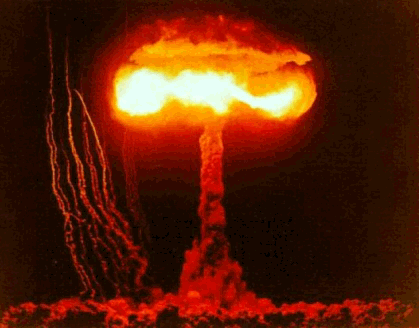Einstein had become world famous due to his theory of E = mc^2. The physicists had discovered fission of the uranium atom and worried that it could be used for destructive bombs. The Second World War was beginning and scientist worried that Nazi Germany would construct such weapons of mass destruction. The strategy adopted was to either try to beat the Germans quickly in the war, or to build the bomb before they could. The Americans needed a man that could present such an idea to the president. The call was to Albert Einstein, who was a pacifist and normally would not take part in such an idea. However, he saw Hitler's extreme aggression and decided that something had to be done to stop it. Einstein signed a letter which warned President Roosevelt to take action for the project. Contrary to popular belief, Einstein played no other role in the development of the nuclear bomb. He was simply used as a consultant because of his popularity.

Einsteinian wisdom
Early Life
e=mc^2
Einstein and society
More information
Back home
